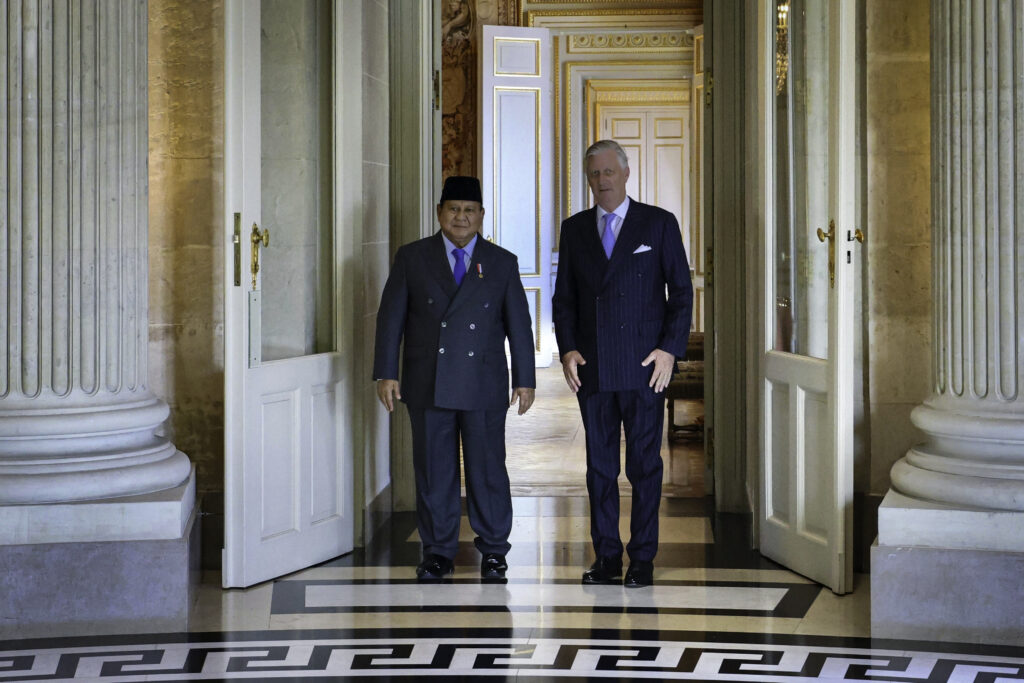Bappenas Highlights Achievements in Economic Growth, Inflation Control

Minister of National Development Planning (PPN)/Head of the National Development Planning Agency (Bappenas) Bambang Brodjonegoro delivers his presentation on the achievement of the 2014-2019 National Medium Term Development Plan (RPJMN), in a press conference after a plenary cabinet meeting, at the State Palace, Jakarta, Thursday (3/10). (Photo by: JAY/PR)
Minister of National Development Planning (PPN)/Head of the National Development Planning Agency (Bappenas) Bambang Brodjonegoro highlighted some achievements on the implementation of the 2014-2019 National Medium Term Development Plan (RPJMN), mainly in economic growth and inflation control.
The average economic growth rate over the past 5 years, according to Bambang, reached around 5%, lower than that of the previous 5 years at 5.5-6%. However, in the previous 5 years, the economy grew higher because of commodity prices.
“At the beginning of Working Cabinet’s administration, the commodity prices boom period was already over and as a result, the economic growth was only at around 5%, which was considered lower (compared to the previous period) but at least the figure was relatively high for an economy as large as Indonesia. (We rank) below countries like China and India, but above many other countries,” Bambang told reporters after attending a plenary cabinet meeting, at the State Palace, Jakarta, Thursday (3/10).
Bambang stated that the inflation rate for the past 5 years is stable at around 3 to 4%. “This is one of the best achievements because we can maintain inflation stability at a low level which means it can strengthen or maintain people’s purchasing power,” he said.
The poverty level, the Minister added, has successfully reduced from the 2 digits poverty rate to a single digit starting in 2018. The latest data shows that this year the Government might be able to reduce poverty to around 9.2% by the end of the year.
He also stated that the Indonesian Human Development Index (HDI), before 2016, was below 70 which means that Indonesia was put in the medium human development category. In 2016, the HDI reached 70 (high HDI category). In 2019, the HDI is expected to reach 72.
The 2019 HDI has yet to be published since there are many data that have not been released. Nevertheless, based on several data that have been published, we have achieved several aspects, the Minister added.
Bambang also stated that there is a 50:50 chance that the country can achieve target in economic dimension including economic growth and tax ratio, meaning that the dimension is hard to be achieved. On the other hand, inflation control, unemployment rate, and jobs provider aspects have successfully met the target. On human and community development, the majority of the targets are predicted to be achieved including HDI and stunting rates. According to him, the stunting rate target in the past 5 years is achieved though the figure is still considered high internationally. The target for the prevalence rate of tuberculosis, as well as the average number of years of education for people aged 15 years old and above, have also been achieved.
In the leading sector development, he said, the majority of the targets have been achieved, including the dwelling time at the port which is estimated at 3.32 days this year. It is between the target of 3-4 days. In addition, the 96.6% electrification ratio target has been reached. Likewise, per capita consumption has reached 1200 kilowatt-hours per person. The target which considered hard to be achieved is the target of 20 million foreign tourists. The estimated number of tourist visits in 2019 is around 17-18 million.
in the next dimension of equitability and territoriality, the Gini index declined from above 0.4 to around 0.382. Although the target has not been achieved yet, the figure continues to decline, to lower than 0.4.
Bambang also stated that on the dimension of legal political development and security resilience, the majority of the targets have been achieved including meeting the minimum essential force and defense equipment. Likewise, the number of political participation (81,7%) has exceeded the target (77.5%).
“The targets that are hard to be achieved include law enforcement, regional spending, regional governments, regional budgets,” he said. (FID/MAY/JAY/ES)
Translated by : Fairuzzamani Inayatillah
Edited by : Rany A. Subachrum, Mia M. Bonaedy








